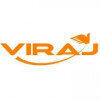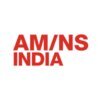
Tata Steel
Proud winner of ABECA 2024 - AmbitionBox Employee Choice Awards
Filter interviews by
Tata Steel Diploma Electrical Engineer Interview Questions and Answers
Tata Steel Diploma Electrical Engineer Interview Experiences
8 interviews found
I applied via Approached by Company and was interviewed in Mar 2024. There was 1 interview round.
(4 Questions)
- Q1. What is the conductor
- Ans.
A conductor is a material that allows the flow of electric current.
Conductors have low resistance to the flow of electricity.
Metals like copper and aluminum are commonly used as conductors.
Conductors are used in electrical wiring, circuits, and transmission lines.
- Q2. What is the semi conductor
- Ans.
A semiconductor is a material that has electrical conductivity between that of a conductor and an insulator.
Semiconductors have a band gap that allows them to conduct electricity under certain conditions.
Common semiconductor materials include silicon, germanium, and gallium arsenide.
Semiconductors are used in electronic devices such as transistors, diodes, and integrated circuits.
- Q3. What is the current
- Ans. Current is the rate at which electrons flow past a point in an electrical circuit
- Q4. What is the electrical
- Ans.
The electrical resistance is a measure of how much an object opposes the flow of electric current.
Electrical resistance is measured in ohms (Ω).
It is determined by the material and dimensions of an object.
Higher resistance means less current flow.
Example: A light bulb has a high resistance, which causes it to glow when current passes through.
Interview Preparation Tips
I applied via AmbitionBox and was interviewed in Aug 2023. There were 3 interview rounds.

(1 Question)
- Q1. What's is tha 3 phase tranformer
- Ans.
A 3 phase transformer is a type of transformer that is designed to handle three-phase power distribution systems.
Consists of three sets of primary and secondary windings
Used in power distribution systems to step up or step down voltage in three-phase circuits
Commonly used in industrial and commercial applications
Examples include distribution transformers, power transformers, and autotransformers
(5 Questions)
- Q1. What is the 3 phase tranformer
- Ans.
A 3 phase transformer is a type of transformer that is designed to handle three-phase power distribution systems.
Consists of three sets of primary and secondary windings
Used in power distribution systems to step up or step down voltage in three-phase circuits
Commonly used in industrial and commercial applications
Examples include distribution transformers, power transformers, and autotransformers
- Q2. 2 phase tranformer what is the
- Ans.
A 2 phase transformer is a type of transformer that has two primary and two secondary windings.
Consists of two primary windings and two secondary windings
Used in certain industrial applications where a 3 phase transformer is not feasible
Less common compared to single phase and 3 phase transformers
- Q3. Kichoff current law what is
- Ans.
Kirchhoff's current law states that the total current entering a junction is equal to the total current leaving the junction.
Total current entering a junction = Total current leaving the junction
It is based on the principle of conservation of charge
Used to analyze and solve electrical circuits
- Q4. What is the semi conductor
- Ans.
A semiconductor is a material that has electrical conductivity between a conductor and an insulator.
Semiconductors have a conductivity between that of a conductor and an insulator
They are used in electronic devices such as transistors, diodes, and integrated circuits
Common semiconductor materials include silicon, germanium, and gallium arsenide
- Q5. What is tha current law
- Ans.
Ohm's Law states that the current flowing through a conductor is directly proportional to the voltage applied across it, and inversely proportional to the resistance of the conductor.
Current (I) = Voltage (V) / Resistance (R)
It helps in calculating the current flowing through a circuit based on the voltage and resistance values.
It is represented by the formula I = V/R.
Ohm's Law is fundamental in understanding and analy
Interview Preparation Tips
(1 Question)
- Q1. PLC , VFD, MOTOR , TRANSFERMER MAINTENANCE
What people are saying about Tata Steel





I applied via Naukri.com and was interviewed in Aug 2023. There were 2 interview rounds.

(2 Questions)
- Q1. MCC PCC HT LT motor and panel etc
- Q2. MCC PCC HT LT motor and panel
Interview Preparation Tips
- Electrical Engineering
- Project Engineering Management
Tata Steel interview questions for designations
I applied via Naukri.com and was interviewed in Dec 2022. There were 3 interview rounds.

(2 Questions)
- Q1. Simple interview questions
- Q2. Simple electrical questions
Simple interview questions
Simple electrical questions
Interview Preparation Tips
My language hindi
I applied via Company Website and was interviewed in Nov 2022. There were 2 interview rounds.

(2 Questions)
- Q1. Maintenace of CAPATIVE POWER PLANT
- Ans.
Maintenance of a captive power plant involves regular checks and upkeep to ensure efficient and safe operation.
Regular inspection of equipment and machinery
Scheduled maintenance of generators, transformers, and switchgear
Testing and calibration of control systems
Cleaning and lubrication of moving parts
Replacement of worn or damaged components
Ensuring compliance with safety regulations
Training of personnel on proper ope
- Q2. Maintenace of Transformer
- Ans.
Maintenance of transformer involves regular inspection, testing, and servicing to ensure its proper functioning.
Regular inspection of transformer components such as bushings, tap changers, and cooling system
Testing of transformer oil for dielectric strength and moisture content
Servicing of transformer by cleaning, tightening connections, and replacing faulty components
Ensuring proper ventilation and cooling of transfor...
Interview Preparation Tips
Maintenance pf EOT Crane.
I applied via Walk-in and was interviewed before May 2022. There were 3 interview rounds.

(2 Questions)
- Q1. Motor maintenance lt panel
- Q2. Instrument nd protection
(1 Question)
- Q1. Motor transformer
I applied via Recruitment Consultant
Interview Questionnaire
1 Question
- Q1. Electrical
Interview questions from similar companies

I applied via Naukri.com and was interviewed before Mar 2021. There were 3 interview rounds.

(2 Questions)
- Q1. All electrical types
- Ans.
The question is asking for knowledge about all types of electrical systems.
Knowledge of different types of electrical systems such as AC, DC, single-phase, three-phase, etc.
Understanding of electrical components and their functions, such as resistors, capacitors, transformers, etc.
Familiarity with electrical codes and regulations.
Ability to read and interpret electrical schematics and diagrams.
Troubleshooting skills to...
- Q2. All electrical and general types
(4 Questions)
- Q1. What are your salary expectations?
- Q2. Share details of your previous job.
- Q3. Where do you see yourself in 5 years?
- Q4. Tell me about yourself.
Interview Preparation Tips

Diploma Electrical Engineer Interview Questions & Answers
Viraj Profilesposted on 17 Nov 2023
(5 Questions)
- Q1. AC current kya hai
- Q2. DC current kya hai
- Q3. DC current direct current hai
- Q4. DC direct current hai
- Q5. AC alternator current hai
Tata Steel Interview FAQs
The duration of Tata Steel Diploma Electrical Engineer interview process can vary, but typically it takes about less than 2 weeks to complete.
Tell us how to improve this page.
Tata Steel Interviews By Designations
- Tata Steel Junior Engineer Interview Questions
- Tata Steel Assistant Manager Interview Questions
- Tata Steel Management Trainee Interview Questions
- Tata Steel Associate Engineer Interview Questions
- Tata Steel Mechanical Engineer Interview Questions
- Tata Steel Manager Interview Questions
- Tata Steel Intern Interview Questions
- Tata Steel Supervisor Interview Questions
- Show more
Interview Questions for Popular Designations
- Diploma Mechanical Engineer Interview Questions
- Diploma Trainee Engineer Interview Questions
- Diploma Civil Engineer Interview Questions
- Diploma Electronics Engineer Interview Questions
- Diploma Apprentice Trainee Interview Questions
- Diploma Chemical Engineer Interview Questions
- Diploma Automobile Engineer Interview Questions
- Diploma Engineer Trainee - DET Interview Questions
- Show more
Tata Steel Diploma Electrical Engineer Interview Process
based on 13 interviews
2 Interview rounds
- Resume Shortlist Round
- Technical Round
Diploma Electrical Engineer Interview Questions from Similar Companies
Fast track your campus placements
Tata Steel Diploma Electrical Engineer Reviews and Ratings
based on 15 reviews
Rating in categories
|
Manager
1.6k
salaries
| ₹6 L/yr - ₹20 L/yr |
|
Assistant Manager
1.4k
salaries
| ₹5.2 L/yr - ₹14.9 L/yr |
|
Senior Manager
1.2k
salaries
| ₹9.3 L/yr - ₹35 L/yr |
|
Associate Engineer
930
salaries
| ₹2 L/yr - ₹8 L/yr |
|
Junior Engineer
893
salaries
| ₹2 L/yr - ₹12 L/yr |

JSW Steel

Jindal Steel and Power

ArcelorMittal Nippon Steel

Jindal Stainless
- Home >
- Interviews >
- Tata Steel Interview Questions >
- Tata Steel Diploma Electrical Engineer Interview Questions

















